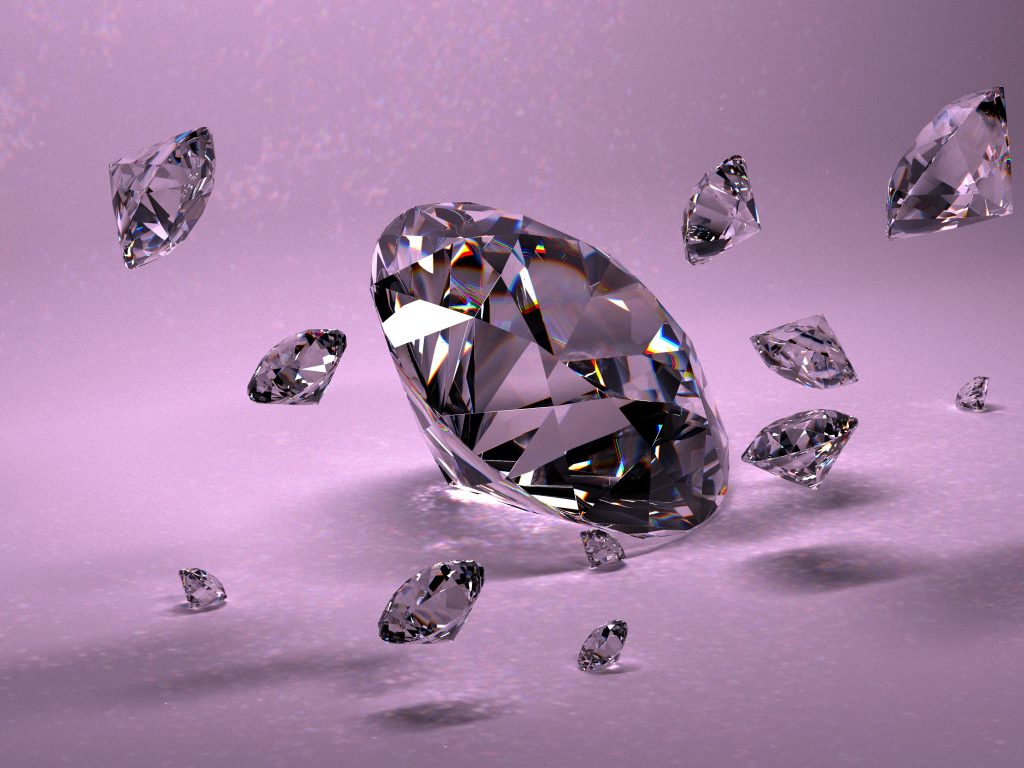How the world's two biggest diamond companies are plotting against the rise of lab-grown gems: 'Buyer beware'

The world’s two most powerful diamond companies are making quiet but decisive moves to counter what some insiders are calling an existential threat to the industry — the growing popularity of lab-grown diamonds.
In May, Signet Jewelers — the world’s biggest diamond retailer, with chains that include Jared, Zales, Kay and Blue Nile — began printing a “buyer beware” disclaimer of sorts on the receipts of all of its lab grown diamond sales, warning customers that the bauble they bought could plummet in value.
Lab-grown diamonds’ “relative abundance may not ensure that their value will hold over time,” Signet’s receipts now state.
The retailer is also training its 20,000 sales associates to educate shoppers about natural diamonds’ unique attributes, including their enduring emotional and financial value, Signet spokesperson Katie Spencer told The Post.
Meanwhile, De Beers — the world’s largest diamond producer — late last month unveiled a new diamond ‘verification’ machine that it’s selling to retailers as a tool to give buyers confidence that they are purchasing a natural diamond.
LGDs and mined rocks are nearly indistinguishable to the naked eye — even to trained jewelers.
The developments come as Signet and De Beers aim to deliver a gut punch to so-called LGDs, with the companies preparing major marketing blitzes for real diamonds in the coming year as the industry anticipates a long-awaited, post-pandemic surge of wedding engagements.
“This is the first time in at least 20 years that the largest seller and producer have come together to take a stand on natural diamonds,” diamond analyst Paul Zimnisky told The Post.
Signet is slated to report quarterly earnings on Thursday.
A year ago, the diamond industry still seemed caught in the headlights as the popularity and profitability of LGDs soared. De Beers poured money into a fledgling LGD label called Lightbox as celebrities like Meghan Markle, Billie Eilish and Leonardo DiCaprio touted them as “conflict-free” and environmentally friendly to Gen Z.
The LGD trend has been devastating for De Beers, which reported a 21% sales decline in the quarter ended in mid-May compared to a year ago. That’s on top of the 36% sales drop in 2023 when De Beers took a $1.6 billion writedown — and blamed it partly on the rise of lab grown diamonds, according to Northcoast Research.
“LGDs account for 19% of the market and are a real threat, growing to as much as 22% this year,” according to Zimnisky.
But distributors of real diamonds say trends lately have turned in their favor: LGDs have gotten so cheap that last year’s profit margins — as high as 50% at retail — are fast evaporating.
Last month, De Beers slashed the price of its Lightbox LGD brand by 37% to $500 a carat citing plummeting wholesale prices. This was on top of a 10% price reduction by the diamond giant in January.
In a little-noticed disclosure on May 31, De Beers also revealed that its Element Six factories will end a six-year stint making lab-grown diamonds and return to their previous focus on making diamonds for industrial uses.
While China has long been the largest producer of man-made diamonds, India began ramping up over the past several years focusing on producing 3-, 4- and 5-carat polished synthetic diamonds.
“We believe that lab grown diamond production is greater than expected with supplies still exceeding demand, pressuring prices down,” Northcoast Research analyst Jim Sanderson told The Post.
The result is that jewelers are now drowning in LGDs, which have fallen in price by nearly 30% over the past 12 months alone, according to experts.
“Retailers’ top line revenue is getting squeezed,” Zimnisky added. “Retailers have to decide if they want to be selling $6,000 or $8,000 natural diamonds or $1,200 man-made diamonds. I think the acute price decline of generic LGDs has really put this into perspective.”
Doug Meadows, owner of David Douglas Diamonds, of Marietta, Ga., is among the retailers whose enthusiasm for LGDs is losing its luster.
Morning Report delivers the latest news, videos, photos and more.
Please provide a valid email address.
By clicking above you agree to the Terms of Use and Privacy Policy.
Never miss a story.
Its a race to the bottom for LGDs for pricing, Meadows told The Post. No one can sustain it at this price. They are just too cheap right now.
A year ago, a two carat LGD engagement ring at his boutique sold for $4,500. Today that same ring is $1,000 less. In response, Douglas began training his sales staff to emphasize natural diamonds again.
We got so excited about LGDs that we lost focus on natural diamonds and the finesse of selling them, he added.
Signets sales were down 6% to $2.5 billion in the latest quarter ended Feb. 3 and its best performing brand in the quarter was value-oriented Banner, which saw flat sales, the company said.
While we have seen continued discounting into the first quarter, Signet chief executive Virginia Drosos said on a March 20 earnings call, I would anticipate that the inventories are recovering somewhat and so that could be a help. I also think that consumers are becoming more aware that lab-created diamond prices are falling.
Signet and De Beers are hammering the point that LGDs are less valuable in a coordinated campaign to change consumers minds about purchasing them for their engagement rings.
De Beers’ “a Diamond is forever” tagline was introduced in 1948 and became one of the most powerful marketing slogans ever.
“Marketing is such an important part of this industry,” Zimnisky said. “Its really up to the diamond industry to explain why consumers should pay more for natural diamonds.”

